

Tools Of A Kind. First Neanderthal cave paintings discovered in Spain - life - 10 February 2012. By Fergal Macerlean Cave paintings in Malaga, Spain, could be the oldest yet found – and the first to have been created by Neanderthals.
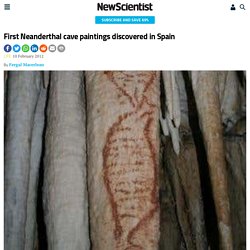
Looking oddly akin to the DNA double helix, the images in fact depict the seals that the locals would have eaten, says José Luis Sanchidrián at the University of Cordoba, Spain. Stone Age Art Gets Animated. Welcome to Animation Domination, Stone Age style.
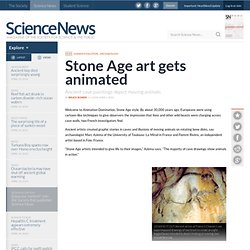
By about 30,000 years ago, Europeans were using cartoon-like techniques to give observers the impression that lions and other wild beasts were charging across cave walls, two French investigators find. LEGGING IT OUT Ancient artists at France's Chauvet Cave superimposed drawings of two bison to create an eight-legged beast intended to depict trotting or running, two researchers say.
M. Azema, J. Clottes, Chauvet Cave scientific team Ancient artists created graphic stories in caves and illusions of moving animals on rotating bone disks, say archaeologist Marc Azéma of the University of Toulouse–Le Mirail in France and Florent Rivère, an independent artist based in Foix, France. “Stone Age artists intended to give life to their images,” Azéma says.
Were Neandertals and Modern Humans Just Ships in the Night? Industrial revolution sealed Neanderthals' fate - life - 28 July 2011. Forget peaceful interbreeding: a new analysis of archaeological sites in south-west France has resurrected the idea that it was good old-fashioned competition that led to the demise of the European Neanderthals in the face of modern humans.

Since a recent analysis of the revealed the first clear evidence that , researchers from a number of academic fields have seized on this nugget of information to formulate new – and less brutal – hypotheses for the Neanderthals' fate. For instance, immunologists suggest modern humans could survive in Neanderthal territory only because they bred with the locals and so . Mathematicians, meanwhile, have proposed that some Neanderthal populations disappeared not because of fierce competition with a superior species but because of . Stone Age toe could redraw human family tree - life - 10 August 2011. By Colin Barras ON THE western fringes of Siberia, the Stone Age Denisova cave has surrendered precious treasure: a toe bone that could shed light on early humans’ promiscuous relations with their hominin cousins.

New Scientist has learned that the bone is now in the care of Svante Pääbo at the Max Planck Institute for Evolutionary Anthropology in Leipzig, Germany, who revealed the first genetic evidence of interbreeding between ancient humans and other hominins (New Scientist, 30 July, p 34). There are tantalising hints that the find strengthens the case for a third major group of hominins circulating in Eurasia at the same time as early humans and the Neanderthals. It might possibly even prove all three groups were interbreeding (see diagram). The Denisova cave had already yielded a fossil tooth and finger bone, in 2000 and 2008. It is a very exciting discovery, says Isabelle De Groote at London’s Natural History Museum.
Human Ancestors Interbred with Related Species. From Nature magazine.
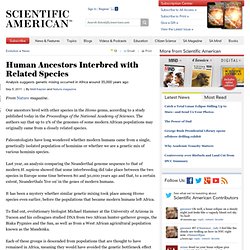
Our ancestors bred with other species in the Homo genus, according to a study published today in the Proceedings of the National Academy of Sciences. The authors say that up to 2% of the genomes of some modern African populations may originally came from a closely related species. Paleontologists have long wondered whether modern humans came from a single, genetically isolated population of hominins or whether we are a genetic mix of various hominin species.
Last year, an analysis comparing the Neanderthal genome sequence to that of modern H. sapiens showed that some interbreeding did take place between the two species in Europe some time between 80 and 30,000 years ago and that, to a certain extent, Neanderthals 'live on' in the genes of modern humans. It has been a mystery whether similar genetic mixing took place among Homo species even earlier, before the populations that became modern humans left Africa. Were Neanderthals Victims of Their Own Success? Neanderthals’ successful adaptation to climate change may have contributed to their extinction by leading to more interactions with humans.
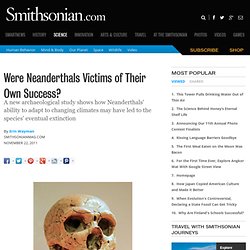
Deep sea fishing for tuna began 42,000 years ago - life - 24 November 2011. Tuna has been on the menu for a lot longer than we thought.
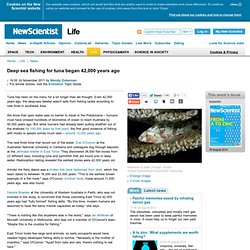
Even 42,000 years ago, the deep-sea dweller wasn't safe from fishing tackle according to new finds in southeast Asia. Our ancestors speak out after 3 million years - life - 23 November 2011. By Charles Harvey.

The World's Oldest Profession: Chef. Entoptics or Doodles: Children of the Cave. There was a time when Paleolithic cave paintings were construed primarily through the lens of “art,” an interpretive stance which assumes that at least some Paleolithic peoples were “artists” who painted for pleasure.
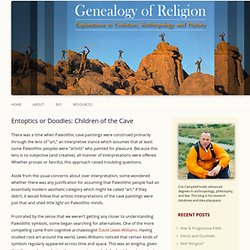
Because this lens is so subjective (and creative), all manner of interpretations were offered. Whether prosaic or fanciful, this approach raised troubling questions. Aside from the usual concerns about over interpretation, some wondered whether there was any justification for assuming that Paleolithic people had an essentially modern aesthetic category which might be called “art.” Shelters Date To Stone Age. Easter Island Statue Project.
Stonehenge Had Lecture Hall Acoustics. Easter Island. “The statues walked,” Easter Islanders say.

Archaeologists are still trying to figure out how—and whether their story is a cautionary tale of environmental disaster or a celebration of human ingenuity. By Hannah Bloch Video Animation by Hans Weise, Spencer Millsap, Fernando G. Baptista, and Fanna Gebreyesus On a winter night last June, José Antonio Tuki, a 30-year-old artist on Easter Island, did one of the things he loves best: He left his one-room home on the southwest coast and hiked north across the island to Anakena beach. Sleepless roosters crowed; stray dogs barked. Easter Island covers just 63 square miles. How Africa Became the Cradle of Humankind. Iceman Autopsy. By Stephen S. Hall Shortly after 6 p.m. on a drizzling, dreary November day in 2010, two men dressed in green surgical scrubs opened the door of the Iceman's chamber in the South Tyrol Museum of Archaeology in Bolzano, Italy.
Ötzi the iceman's stomach throws up a surprise - life - 11 December 2011. IT'S time to rethink Ötzi the iceman's last hours.